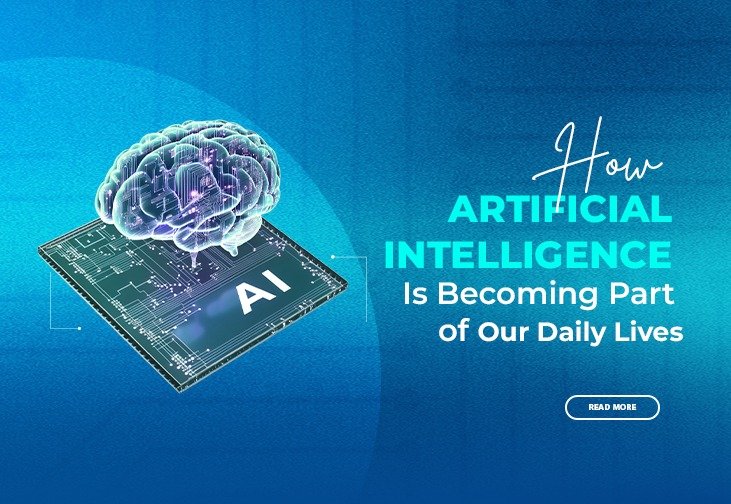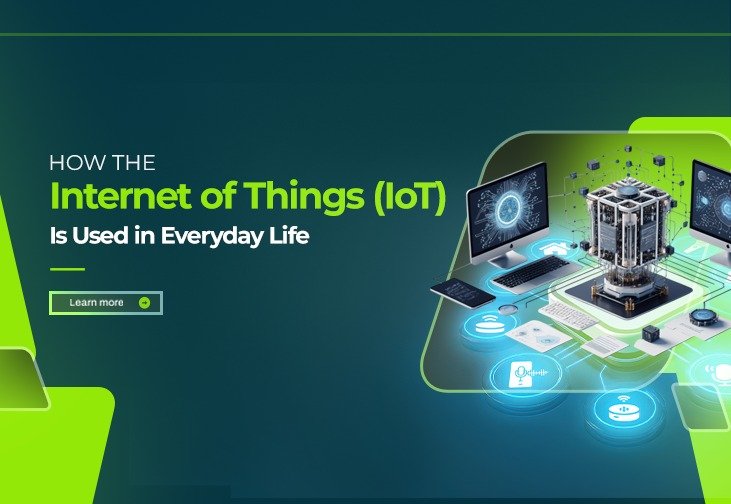Artificial Intelligence (AI) is no longer a concept confined to science fiction or research laboratories. It is now deeply woven into the fabric of our everyday experiences, often without us even realizing it. From smartphones to online shopping and navigation tools to virtual assistants, AI is quietly transforming how we live, work and interact with the world around us. As technology advances rapidly, artificial intelligence in everyday life is becoming less of a futuristic vision and more of a present reality. This blog explores the subtle and obvious ways AI is integrated into our routines, shaping decisions and changing how we interact with our environment.
Understanding Artificial Intelligence in Simple Terms
Artificial Intelligence refers to computer systems designed to perform tasks that typically require human intelligence. This includes problem-solving, learning, recognizing patterns, understanding language and even decision-making. While the term might sound complex, it simply means machines and software programs are becoming smart enough to assist with tasks, often learning and adapting over time. This intelligence is built using algorithms, data and computational power, allowing machines to make sense of information and respond in useful ways. These systems are not limited to robots; they include software like voice assistants, recommendation engines and smart home devices.
AI on Your Phone: A Constant Companion
Every time we unlock our smartphones with facial recognition or use a voice assistant like Siri or Google Assistant, we are using artificial intelligence. These features work by processing large amounts of data and using pattern recognition to understand and respond to user commands. Predictive text, voice typing, language translation and camera enhancements all rely on AI. Even the way apps suggest friends on social media or organize our photo libraries is driven by intelligent algorithms. The more we use our phones, the better these systems understand our preferences, behaviours and routines, making artificial intelligence in everyday life more seamless than ever.
How AI Shapes Online Shopping Experiences
AI plays a major role in shaping our online shopping behaviour. When we browse e-commerce platforms, the product suggestions we receive are generated using AI-powered recommendation engines. These systems analyse our search history, purchase records and even time spent viewing certain items. By learning our likes and dislikes, AI helps websites display products that match our interests, increasing the chance of a purchase. Additionally, customer service chatbots use AI to provide quick answers, track orders and even handle complaints—all without human intervention. Behind the scenes, AI also manages stock inventory, predicts product demand and helps companies offer better pricing.
Smart Homes and AI: Making Life More Convenient
Smart home devices such as thermostats, security cameras, lights and voice-controlled appliances are all operated using artificial intelligence. These devices learn from our behaviours and routines. For example, a smart thermostat can detect when you usually arrive home and adjust the temperature accordingly. Voice assistants like Alexa can recognize individual voices, schedule tasks and even control other smart devices. AI also plays a role in improving energy efficiency by learning when to turn off lights or reduce heating when not needed. These small but significant changes illustrate how artificial intelligence in everyday life is improving convenience and comfort in modern homes.
Transportation and Navigation with AI
Navigation apps such as Google Maps or Waze rely on AI to offer the best routes in real-time. These apps consider traffic congestion, road closures, weather conditions and user feedback to suggest faster and safer ways to reach a destination. Ride-sharing apps like Uber or Ola use AI to connect drivers with passengers, calculate fares and estimate arrival times. Self-driving cars, still in development but growing fast, use a complex combination of sensors, cameras and AI to interpret surroundings and make driving decisions. Whether we are behind the wheel or using public transportation, AI is quietly guiding our journeys.
Healthcare and Medical Applications of AI
AI is becoming a valuable tool in healthcare. From diagnosing diseases using image analysis to predicting patient risks, AI supports doctors and healthcare providers in making better decisions. AI-powered chatbots help patients describe their symptoms and guide them toward the right kind of medical help. In hospitals, AI systems can monitor patients’ vital signs in real-time, alerting staff to any warning signs. Algorithms are even being developed to detect cancers, heart conditions and neurological disorders with high accuracy. Though AI does not replace medical professionals, it serves as an extra layer of support that enhances healthcare delivery and saves lives.
Personalized Entertainment and AI
Streaming platforms like Netflix, YouTube and Spotify use AI to personalize recommendations. These systems study what content you watch or listen to and then suggest similar options that align with your tastes. This creates a more enjoyable experience by making content discovery effortless. AI also plays a role in adjusting video quality based on internet speed and in creating subtitles and language dubbing. In gaming, AI controls non-player characters and adapts difficulty levels based on a player’s skill. These behind-the-scenes efforts make entertainment platforms more engaging and tailored to individual preferences, again showing how artificial intelligence in everyday life enhances leisure activities.
Education and Learning Tools with AI Integration
AI is transforming education by creating interactive and personalized learning experiences. Online platforms now use AI to assess a student’s progress and recommend areas to focus on. Virtual tutors offer real-time assistance, helping students understand difficult concepts. Speech recognition tools can help those with reading difficulties, while language translation tools aid non-native speakers. AI can even automate administrative tasks such as grading and attendance tracking, allowing teachers to spend more time with students. In classrooms or at home, artificial intelligence is making education more accessible, adaptive and efficient for learners of all ages and backgrounds.
AI in Banking and Financial Services
AI has become essential in modern banking systems. It powers fraud detection tools that analyze transactions in real time and flag suspicious activities. AI chatbots handle customer inquiries, help users manage their accounts and guide them through basic financial services. Investment platforms use AI to analyze market trends and provide automated financial advice, often referred to as “robo-advisors.” Banks also use AI for credit scoring and loan approval by evaluating financial histories and predicting repayment behaviour. By making financial services faster and more secure, artificial intelligence in everyday life ensures smoother banking experiences for both consumers and institutions.
The Role of AI in Workplaces and Offices
In professional environments, AI is optimizing productivity and streamlining operations. AI tools help businesses analyze data trends, automate routine tasks and even manage employee scheduling. For example, AI-driven software can sort resumes, schedule interviews and evaluate candidate performance during recruitment. Customer service centers use AI to route calls and predict customer issues based on past interactions. AI also assists in drafting emails, setting reminders and organizing files, allowing employees to focus on tasks that require human creativity and decision-making. As more offices adopt digital tools, the presence of AI is becoming an essential part of the modern workplace.
Ethical Considerations and Human Oversight
As AI becomes more involved in daily life, it’s important to address the ethical concerns that come with it. Issues like data privacy, job displacement and decision-making transparency need careful thought. While AI can perform many tasks well, it must be guided by human values and accountability. Decisions made by AI, especially in sensitive areas like healthcare, law enforcement or hiring, should always involve human oversight. There is also the risk of bias in AI systems if the data they are trained on is flawed. Understanding these limitations and ensuring ethical practices is key as we move forward.
Looking Ahead: The Future of AI in Daily Life
The role of artificial intelligence in everyday life is expected to grow in the coming years. As AI technologies become more advanced and affordable, they will continue to influence areas such as education, agriculture, public safety and even climate monitoring. Smart cities with AI-driven traffic systems, AI-powered virtual companions for the elderly and advanced AI tutors for students in remote areas are just a few possibilities. However, this growth must be accompanied by discussions around responsible use, data security and accessibility. Ensuring that the benefits of AI are available to all sections of society will be essential for a balanced future.
Final Thoughts
From helping us choose the fastest route home to make our homes smarter and our healthcare better, AI has moved from novelty to necessity. The presence of artificial intelligence in everyday life is growing, often in ways we don’t see but definitely feel. It simplifies our tasks, enhances our decisions and creates more personalized experiences. Yet, it’s equally important to remain aware of its limitations and ethical boundaries. As we continue to live alongside intelligent machines and software, understanding how AI works and where it is used will empower us to use it more effectively and responsibly. In this rapidly evolving landscape, staying informed is our best way forward.



